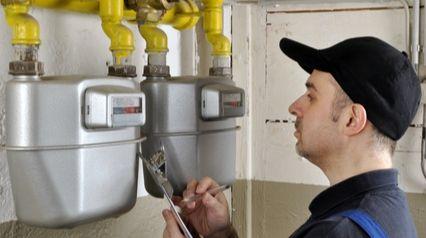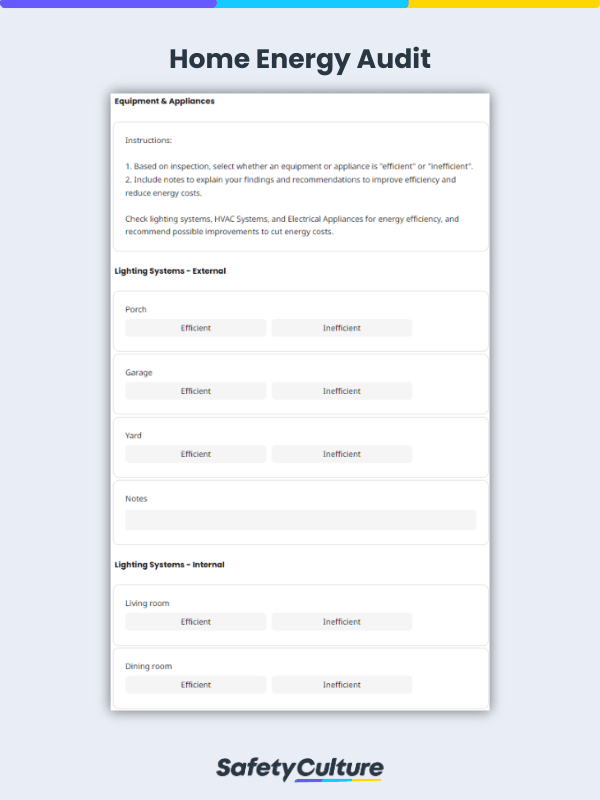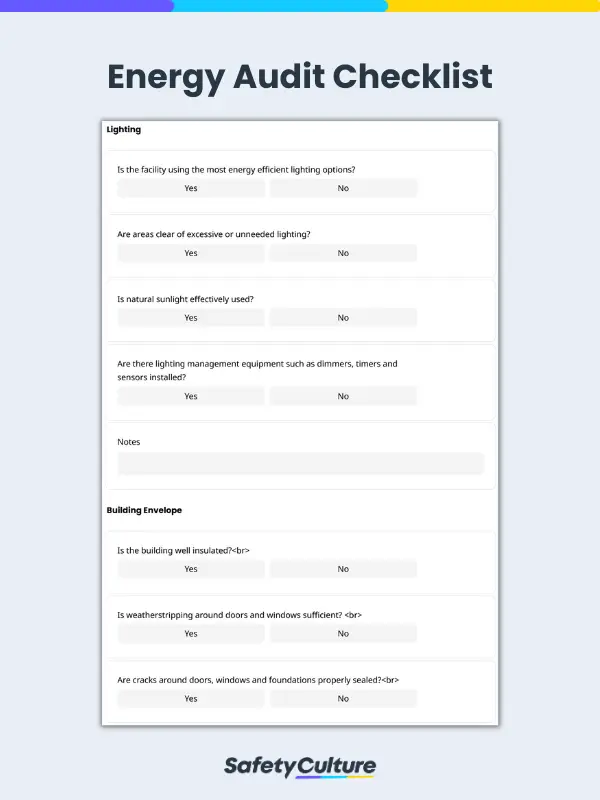What is an Energy Audit?
An energy audit inspects a building or home’s energy usage to help identify the factors that drive up energy consumption. Information gathered through the inspection is used as a basis for presented recommendations to cut down energy costs. An energy audit involves a thorough walkthrough inspection by a certified energy auditor who will provide a report of their findings and recommendations to improve energy efficiency.
What to Check When Performing an Energy Audit
A successful energy audit must evaluate all of the contributing factors to a building’s energy consumption. An accurate energy audit report is important in keeping energy consumption in check and prolonging the lifespan of electrical equipment. Here are the Top 3 things to check when performing an energy audit:
- Equipment/Appliances
- Lighting – Lighting systems are present in all buildings and it is important that they are used efficiently to maximize energy savings. Check the wattage, usage, and location of internal and external lighting systems. Replace traditional incandescent bulbs with energy-efficient options such as halogen incandescents, compact fluorescent lamps (CFLs), and light-emitting diodes (LEDs). Review the daily usage of lighting systems and check if they can be switched off to take advantage of daylight. Check if automatic lighting controls can be installed for spaces that are intermittently occupied such as store rooms, kitchens, and toilets to ensure that lights are turned off when not in use.
- Heating, Ventilation, and Air Conditioning (HVAC) – Similar to lighting systems, HVAC systems affect the entire building space and its proper use can help cut down energy expenses. Check if an automatic thermostat is installed and working. This can be programmed to adjust the temperature for different times of the day and maximize efficiency. Inspect air filters and advise if they need cleaning. Recommend a cleaning schedule for air filters as dust and debris buildup forces air conditioners to work harder to maintain air flow, driving up your utility expenses.
- Electrical appliances – This refers to office appliances including computers and printers, and household appliances such as TVs, refrigerators, and water heating systems. Check if computers and monitors are energy efficient based on their model and Energy Star rating. Review water heater energy factor (EF) to determine efficiency and check if a replacement can help reduce energy expenses. Check if fridge seals are in good condition, the temperature is in the appropriate setting, and coils are kept clean for maximum energy efficiency.
- Building/home design
Good design reduces power consumption and helps lower energy expenses. Check the insulation on walls, floors, and ceilings to ensure that the heat or cold generated by the HVAC system isn’t wasted. Inspect gaps around doors, windows, and vents including openings between the interior and the exterior of the building to see if they are draft-proof. If possible, recommend that solar panels be installed as the main source of energy to save more long term. - Energy consumption habits
The cheapest way to reduce energy expenses is to develop good energy consumption habits. Check if:- computers and other appliances are kept running when not in use
- lights can be turned off in the daytime to take advantage of natural light
- thermostat is set up or down by only 8 degrees based on the outside temperature
SafetyCulture (formerly iAuditor) as a Digital Energy Audit Checklist
Paperless Energy Audits for Maximum Efficiency
An energy audit software is used as a formal assessment of a residential or commercial establishment’s energy consumption habits. Energy audits are performed by either an in-house energy auditor or a contractor. The purpose of an energy audit is to identify if resources are being used economically to avoid excessive and unnecessary charges. Through diligent energy auditing, homeowners, landlords, and business operators can maximize their energy savings for better financial management. With the SafetyCulture Energy Audit Software, energy auditors can ditch paper checklists for intuitive digital smart forms that make inspections more efficient and automatically generate professional reports upon audit completion to share with clients and stakeholders for better visibility and faster action.
Less paperwork, better workflow with an Energy Audit Software
No need to manually compile and organize energy audit reports. SafetyCulture gives you an easy-to-use digital platform so you spend less time sorting data and more time collecting them. Go paperless and see your energy audit efficiency skyrocket.
Keep all of your data in one place
Paper records can get lost, damaged, or worse, accessed by unauthorized personnel. SafetyCulture automatically stores your audit data via secure cloud technology so only authorized personnel can access whatever information they need, whenever they need it.
See the big picture through powerful analytics
Aside from securing your data, you can filter them by location, time and date, department, employees, templates, and more; there is no need to manually search through every single document to find the information you need. More importantly, SafetyCulture analyzes your data to provide you with actionable insights you can use to improve your energy auditing process.




